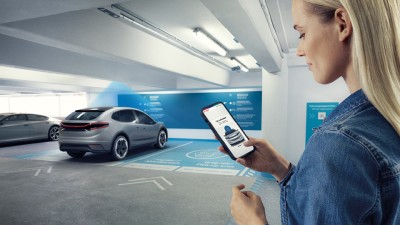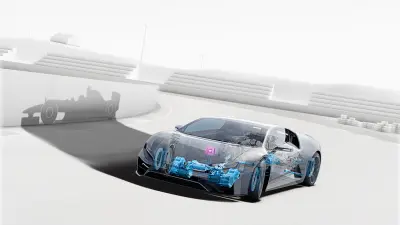Bosch Engineering and Ligier Automotive present high-performance vehicle with a hydrogen engine

In a joint development project, Bosch Engineering and Ligier Automotive have built a high-performance vehicle with a hydrogen combustion engine as a demonstrator. With 25 years of experience as a specialized development partner, Bosch Engineering was responsible for the overall vehicle concept and played a key role in the development of the engine and tank concept as well as a comprehensive multi-stage hydrogen security system implemented. As a specialist in racing, Ligier Automotive brings many years of know-how in vehicle technology, engine design and testing. In the project, Ligier Automotive was responsible for the overall dynamics of the vehicle, the construction of the monocoque and the adaptation of the chassis of the existing Ligier JS2 R. In addition, the company optimized the mechanical components for hydrogen operation and took over their integration into the new vehicle.
As part of the 100th anniversary of the 24 Hours of Le Mans in June 2023, the Ligier JS2 RH2 celebrated its premiere and has since been extensively tested and optimized.
Concept and package of the vehicle
The Ligier JS2 RH2 with hydrogen engine is based on the Ligier JS2 R, a racing car originally designed for a 3.7-liter gasoline engine. In the course of the development of the H2 demonstrator, the vehicle had to be extensively modified.
The 3.0-litre V6 biturbo engine from the JS2 RH2 is based on a series-production gasoline engine that the experts at Bosch Engineering have converted to the use of hydrogen. In particular, the ignition and the entire injection system were adapted. By systematic application, a high power of 443 kW, a torque of 650 Nm and a very good response of the engine in transient operation could be achieved. The engine concept ensures both a very lean, particularly low nitrogen oxide combustion down to the partial load, as well as a very high specific power. Another challenge in engine development was the stable combustion without preignitions at high loads and engine speeds of over 7,000/min.

Tank system and multi-stage hydrogen safety concept

During the system development of the Ligier JS2 RH2, particular emphasis was placed on the design of the high-pressure tanks and functional safety.
The H2 tanks are designed for a system pressure of 700 bar and are made of carbon fiber. The best possible packaging was a concept with three tanks: one behind the passenger cell and two on the sides of the vehicle.
-
Facts -
Tank integration into the vehicle -
Ligier JS2 RH2 tank system with three pressure levels and complex valve control

The vehicle’s multi-stage hydrogen safety concept consists of a combination of active and passive measures.
A complex piping system connects the three tanks with the H2 injection components of the engine. The tank system and the supply lines are controlled and monitored by the Hydrogen Storage Control Unit (HSCU) developed by Bosch specifically for H2 applications. It communicates with the other electronic components of the E/E system via the vehicle’s CAN bus.
Thus, the hydrogen safety concept includes both the storage system with the high-pressure tanks and the pressure regulators and supply lines to the engine and the injection system. The separation of tanks, gas control components and engine compartment as well as a passive ventilation and venting concept via pipes and chimneys ensure a targeted removal of gases to the outside, so that they cannot get into the passenger compartment or into hot engine compartment components. Leaks in the system are also detected by numerous safrety sensors.
Depending on the type and severity of the defect, the multi-stage active safety concept is triggered, which ranges from a warning to the driver on the display to the shutdown of individual pipes to the overall system shutdown.
The Ligier JS2 RH2 thus sets standards in the functional safety of hydrogen-powered vehicles and at the same time offers maximum system availability.

Loading the video requires your consent. If you agree by clicking on the Play icon, the video will load and data will be transmitted to Google as well as information will be accessed and stored by Google on your device. Google may be able to link these data or information with existing data.






